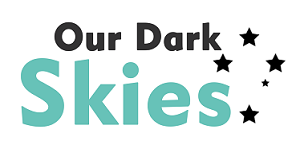Custom signage has become increasingly popular as businesses seek unique and personalized solutions to stand out in a crowded marketplace. The rise of custom signage is driven by advancements in technology, changing consumer preferences, and the need for businesses to create a distinct brand identity. This article explores the latest trends in custom signage and offers best practices for designing and implementing effective custom signs.
Understanding Custom Signage
What is Custom Signage?
Custom signage refers to signs that are specifically designed and tailored to meet the unique needs and preferences of a business. Unlike standard, off-the-shelf signs, custom signage allows for complete control over design elements, materials, and messaging, resulting in a one-of-a-kind visual solution.
Benefits of Custom Signage
Custom signage offers numerous benefits, including enhanced brand recognition, increased customer engagement, and improved aesthetics. By creating signs that reflect their unique identity and values, businesses can differentiate themselves from competitors and create a memorable impression on customers.
Trends in Custom Signage
Personalized and Interactive Experiences
One of the most significant trends in custom signage is the focus on personalized and interactive experiences. Businesses are using technology to create signs that interact with customers, provide personalized information, and enhance the overall experience. Examples include interactive touchscreens, QR codes, and augmented reality (AR) features.
Sustainable Materials
Sustainability is a growing concern for businesses and consumers alike. Custom signage made from eco-friendly materials, such as recycled plastics, biodegradable substrates, and sustainably sourced wood, is becoming increasingly popular. This trend reflects a broader commitment to environmental responsibility and appeals to eco-conscious customers.
Digital and Dynamic Displays
Digital signage technology has revolutionized the custom signage industry. Digital displays offer dynamic content capabilities, allowing businesses to update messaging in real-time and create engaging visual experiences. LED and LCD screens, video walls, and digital kiosks are common examples of digital custom signage.
Minimalist and Clean Designs
Minimalist design trends have influenced custom signage, with businesses opting for clean, simple, and elegant designs. This approach emphasizes clarity and readability, making it easier for customers to absorb the intended message. Minimalist signage often features bold typography, limited color palettes, and uncluttered layouts.
3D and Dimensional Signs
Three-dimensional (3D) and dimensional signs add depth and visual interest to custom signage. These signs can be crafted from various materials, including metal, wood, acrylic, and foam, to create a tactile and eye-catching effect. 3D signage is commonly used for logos, lettering, and decorative elements.
Best Practices for Designing Custom Signage
Understand Your Brand and Audience
Before designing custom signage, it’s essential to have a clear understanding of your brand identity and target audience. Consider your brand’s values, personality, and visual style, as well as the preferences and behaviors of your audience. This knowledge will guide the design process and ensure that the signage resonates with your customers.
Prioritize Legibility and Visibility
Effective signage must be easily readable and visible from a distance. Choose fonts that are clear and legible, and ensure sufficient contrast between text and background colors. The size and placement of the sign should also be considered to maximize visibility in different environments and lighting conditions.
Incorporate High-Quality Materials
The choice of materials plays a crucial role in the appearance and durability of custom signage. Select high-quality materials that align with your brand’s aesthetic and can withstand environmental conditions. Durable materials, such as aluminum, acrylic, and high-density urethane (HDU), ensure that the signage remains attractive and functional over time.
Embrace Technology
Leveraging technology can enhance the impact of custom signage. Digital displays, interactive features, and smart signage solutions can create engaging and dynamic experiences for customers. Consider incorporating technologies that align with your business goals and enhance the overall effectiveness of the signage.
Work with Experienced Designers
Collaborating with experienced designers and sign companies is essential for creating high-quality custom signage. Professional designers can translate your vision into a compelling visual solution, ensuring that the signage aligns with your brand and meets your objectives. Look for designers with a strong portfolio and expertise in custom signage.
Implementing Custom Signage
Site Assessment and Planning
Conduct a thorough site assessment to determine the best location and placement for your custom signage. Consider factors such as traffic flow, sightlines, lighting conditions, and local regulations. A well-planned installation ensures that the signage is optimally positioned for maximum visibility and impact.
Permitting and Compliance
Ensure that your custom signage complies with local zoning laws, building codes, and permitting requirements. Obtain all necessary permits before installation to avoid legal issues and potential fines. Working with a knowledgeable dallas sign company can help navigate the permitting process and ensure compliance.
Installation and Maintenance
Proper installation is critical for the performance and longevity of custom signage. Hire experienced installers who can securely and accurately mount the signage. Regular maintenance, including cleaning, inspections, and repairs, is essential to keep the signage in optimal condition and maintain its visual appeal.
Measuring Effectiveness
Evaluate the effectiveness of your custom signage by tracking key performance metrics, such as foot traffic, customer engagement, and sales. Collecting customer feedback can also provide valuable insights into the signage’s impact. Use this data to make informed decisions and continuously improve your signage strategy.
Case Studies of Successful Custom Signage
Retail Storefronts
A high-end fashion retailer implemented custom 3D signage featuring illuminated letters and a sleek, minimalist design. The signage enhanced the store’s upscale image and attracted attention from passersby. As a result, the retailer experienced increased foot traffic and brand recognition.
Corporate Offices
A tech company designed custom digital signage for its corporate headquarters, including interactive touchscreens and video walls. The signage provided real-time information about company news, events, and achievements, creating an engaging and informative environment for employees and visitors.
Restaurants and Cafes
A local cafe used custom chalkboard-style signage with hand-drawn illustrations and personalized messages to create a cozy and welcoming atmosphere. The unique signage reflected the cafe’s brand identity and resonated with customers, leading to positive reviews and repeat business.
The Future of Custom Signage
Advancements in Technology
The future of custom signage will be shaped by advancements in technology, such as artificial intelligence (AI), augmented reality (AR), and the Internet of Things (IoT). These technologies will enable more personalized, interactive, and data-driven signage solutions that enhance customer experiences and drive business success.
Sustainability and Innovation
As sustainability continues to be a priority, sign companies will explore innovative materials and practices to create eco-friendly custom signage. Biodegradable substrates, energy-efficient lighting, and sustainable production methods will become increasingly common, reflecting a commitment to environmental responsibility.
Integration with Digital Platforms
Custom signage will increasingly integrate with digital platforms, such as social media, mobile apps, and online marketing campaigns. This integration will create seamless and cohesive brand experiences across multiple touchpoints, enhancing customer engagement and loyalty.
Conclusion
Custom signage offers businesses a powerful tool for creating unique and memorable brand experiences. By understanding the latest trends, prioritizing design best practices, and leveraging technology, sign companies can deliver impactful custom signage solutions that drive customer engagement and business success. As the industry continues to evolve, embracing innovation and sustainability will be key to staying ahead and meeting the ever-changing needs of businesses and consumers.





